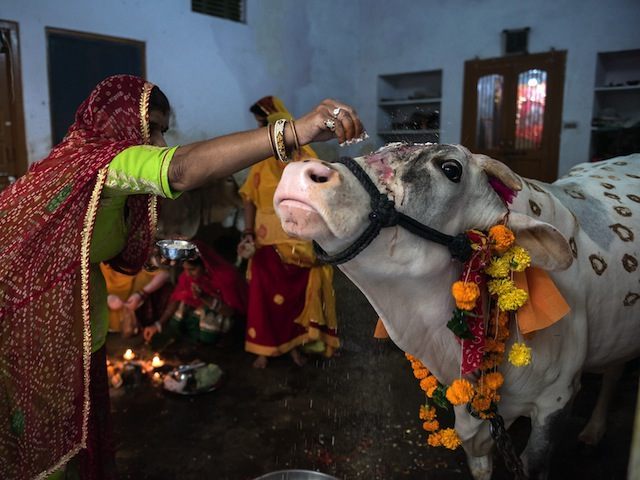Gov. Jerry Brown has signed a controversial law making California the nation’s strictest regulator of the use of livestock antibiotics, limiting use only to sick animals directly under the care of a veterinarian.
Research has demonstrated that the use of anti-microbial compounds in food animal production have provided substantial benefits, including improved animal health, higher production and, in some cases, reduction in foodborne pathogens. However, use of antibiotics for agricultural purposes, particularly for growth enhancement, has come under scrutiny, as it has been shown that it may contribute to the increased prevalence of antibiotic-resistant bacteria that can infect humans.
The Centers for Disease Control and Prevention (CDC) estimates that in the United States, more than two million people are sickened every year with antibiotic-resistant infections, and at least 23,000 die as a result.
The transfer of antibiotic resistance genes and selection for resistant bacteria is known to occur through a variety of mechanisms. Although the vast majority are not linked to antibiotic use and the risk posed to humans by resistant organisms from farms and livestock, a number of European countries have enacted tighter restrictions or bans on some types of growth-promoting antibiotic use in food animal production.
But such strict government regulation has been shown to cause subsequent increases in young animal sickness and mortality rates, which often results in even higher use of therapeutic antibiotics by veterinarians.
Many of the leading proponents of California’s stringent regulation of antibiotics refer to the rise of Methicilllin-resistant Staphylococcus aureus, known as MRSA infection. Decades ago, a strain of staph emerged in hospitals that are resistant to the broad-spectrum antibiotics commonly used to treat most staph infections.
Humans bear most of the responsibility for the MRSA “superbug,” because antibiotics were prescribed for decades to treat colds, flu and other viral infections that do not respond to these drugs. Since bacteria live on an evolutionary fast track that allows them to mutate rapidly to survive treatment from a progression of antibiotic compounds. Eventually, a superbug like MRSA can end up resistant to just about everything.
The Los Angeles Times refers to a statistic extrapolated by PETA from the CDC’s 2013 report, titled “Antibiotic Resistance Threats in the United States” that U.S. livestock producers consume about 70 percent of the antibiotics sold in America. But the FDA has specifically stated that the numbers on antibiotic use should not be compared.
The reason the comparison is bogus is that there are far more animals in the U.S. than people. There are over eight billion chickens, 200 million turkeys, 90 million cattle, 66 million hogs, and 5.3 million sheep on U.S. farms.
The combined weight of livestock and poultry in the U.S. is roughly 3.5 times that of the combined weight of American men and women. A 1,200-pound steer is equal to roughly six men. Treating a steer for pneumonia always requires a larger dose than a person.
Many opponents of the law claim that it is an effort by PETA and other animal rights activistss to ban the raising of livestock for meat, since it will be difficult for rural farmers to afford veterinarians coming out to their free-ranging herds.
Brown, in signing SB 27 (effective on January 1, 2018), said that the overuse of antibiotics has undermined decades of life-saving advances in medicine.

COMMENTS
Please let us know if you're having issues with commenting.